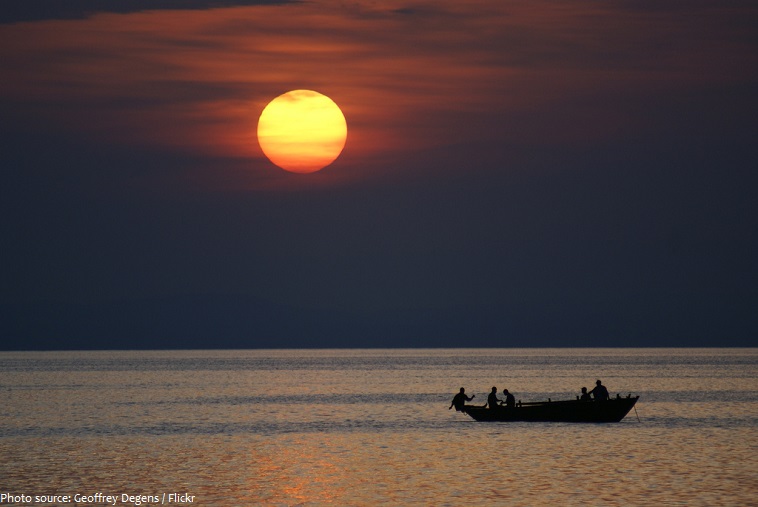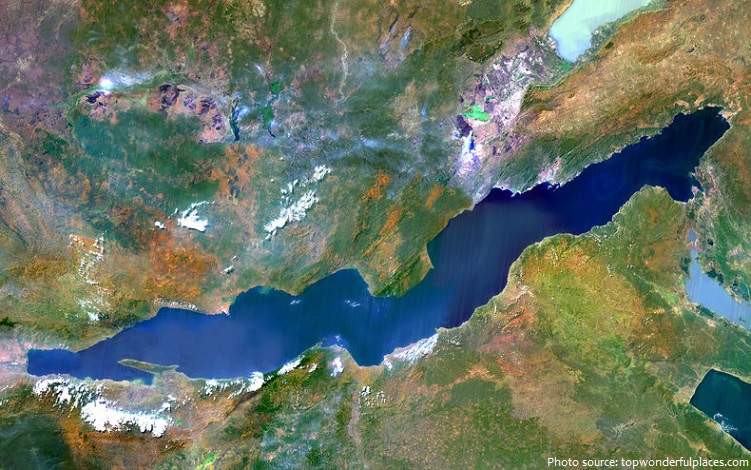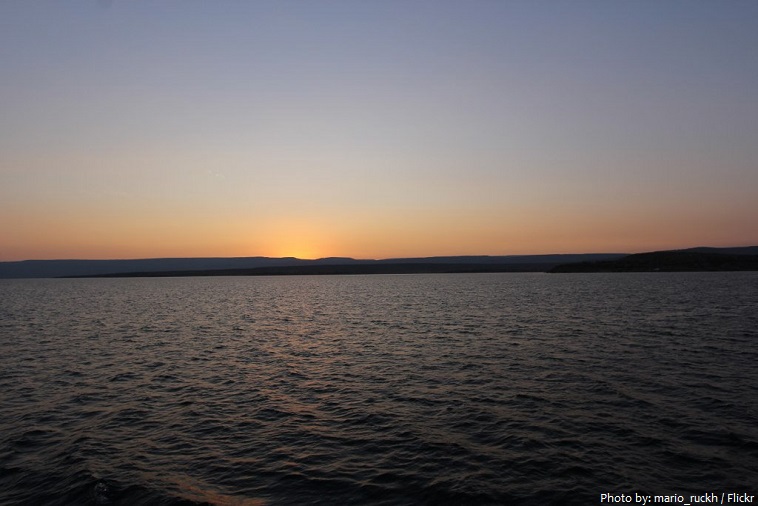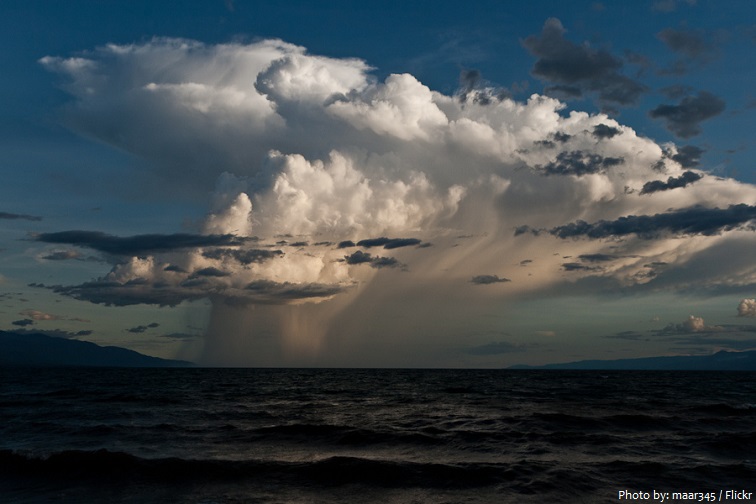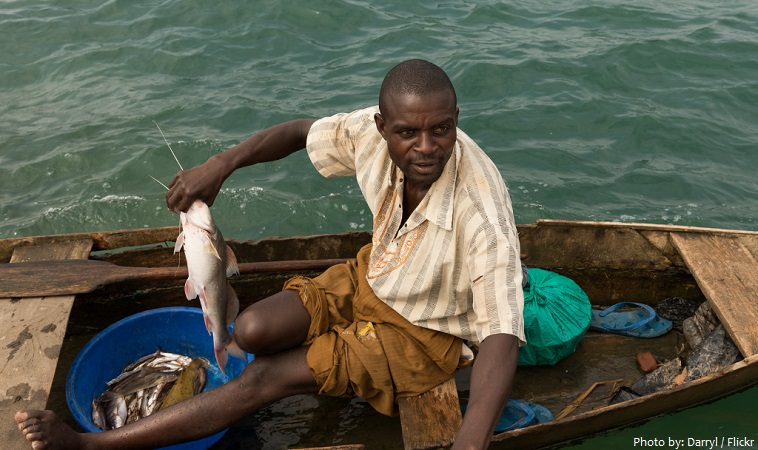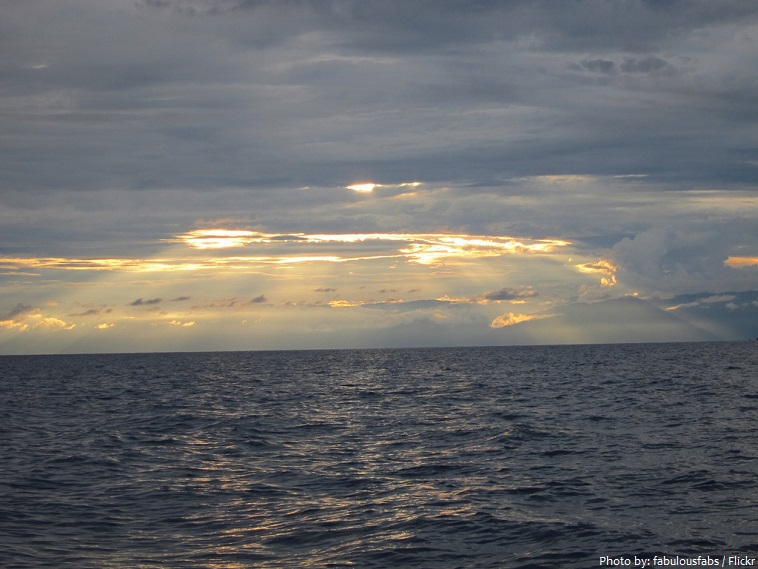Lake Tanganyika is an African Great Lake.
The lake lies in the Great Rift Valley and is divided among four countries – Tanzania, Democratic Republic of the Congo (DRC), Burundi, and Zambia, with Tanzania (46%) and DRC (40%) possessing the majority of the lake.
Lake Tanganyika is 673 kilometers (418 miles) long, which makes it the world’s longest freshwater lake. It averages around 50 kilometers (31 miles) in width, with a maximum of 72 kilometers (45 miles).
The lake’s surface area of 32,900 square kilometers (or 12,700 square miles) makes it the sixth largest lake in the world by surface area.
It is estimated to be the second largest freshwater lake in the world by volume, and the second deepest, in both cases, after only Lake Baikal in Siberia.
It has a shoreline of 1,828 kilometers (1,136 miles), a mean depth of 570 meters (1,870 ft) and a maximum depth of 1,470 meters (4,820 feet).
It holds an estimated 18,900 cubic kilometers (4,500 cubic miles) – this is equivalent to about 16% of all fresh water on Earth.
The surface of the lake is 773 meters (2,536 feet) above sea level.
It has an average surface temperature of 25°C (77°F).
Lake Tanganyika has a retention time (the measurement of time that water spends in a particular lake) of 440 years.
The Lake boasts visibilities of up to 20 meters (65 feet) with massive boulders, spectacular drop offs and a shell covered bottom.
The lower depths of the lake are fossil-water and lack oxygen.
The lake is also known for its ferocious storms which generate 6-meter (20-foot) waves.
The catchment area of the lake is 231,000 square kilometers (89,000 square miles).
The most important rivers that flow into the lake are the Malagarasi River, the Ruzizi River and the Kalambo River. The major outflow is the Lukuga River, which empties into the Congo River system.
Lake Tanganyika is one of the 20 ancient lakes on Earth, and its age is estimated to be somewhere between 9 to 12 million years old.
Thanks to its age and ecological isolation it’s home to an exceptional number of endemic fish. It is home to 300 fish species, 95 % of them are endemic. The chilid species dominate. There are also 68 snail species in the lake, out of which 45 are endemic. Additionally, there are 15 bivalve species, out of which 8 are endemic.
Approximately one million people live around the lake. Tanganyika is a source of fish for consumption and for trade, and a vital transport and communications link between the countries bordering it.
Sport fishing is very popular here and catches include the goliath tigerfish and Nile perch.
Lake Tanganyika and its shores boast an exceptional diversity of plants and animals. It’s estimated that the lake is home to more than 2,000 animal and plant species, out of which 600 are endemic.
Lake Tanganyika has large populations of hippopotamuses and crocodiles.
The Basin contains several forest reserves and national parks including Rusizi Nature Reserve and Kigwena Forest Reserve in Burundi, Gombe Stream, Katavi and Mahale Mountains National Park in Tanzania, and Nsumbu National Park in Zambia.
The name apparently refers to “Tanganika, ‘the great lake spreading out like a plain’, or ‘plain-like lake’.
It is thought that early Homo Sapiens was making an impact on the region already during the stone age.
The first known Westerners to find the lake were the British explorers Richard Burton and John Speke, in 1858.
The lake was the scene of two celebrated battles during World War I.
In 1965 Argentinian revolutionary Che Guevara used the western shores of Lake Tanganyika as a training camp for guerrilla forces in the Congo. From his camp, Che and his forces attempted to overthrow the government, but ended up pulling out in less than a year since the National Security Agency (NSA) had been monitoring him the entire time and aided government forces in ambushing his guerrillas.
In 1992 Lake Tanganyika featured in the British TV documentary series Pole to Pole. The BBC documentarian Michael Palin stayed on board the MV Liemba and travelled across the lake.
Since 2004 the lake has been the focus of a massive Water and Nature Initiative by the IUCN. The project is scheduled to take five years at a total cost of US$27 million. The initiative is attempting to monitor the resources and state of the lake, set common criteria for acceptable level of sediments, pollution, and water quality in general, and design and establish a lake basin management authority.
